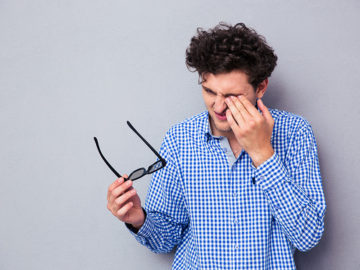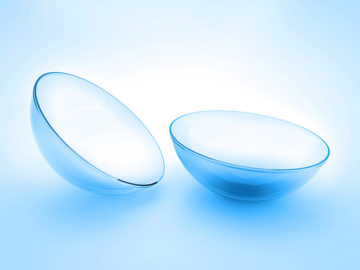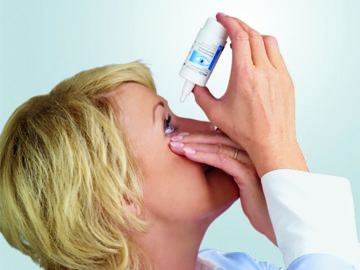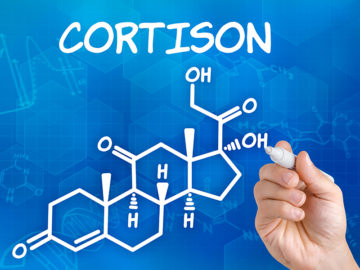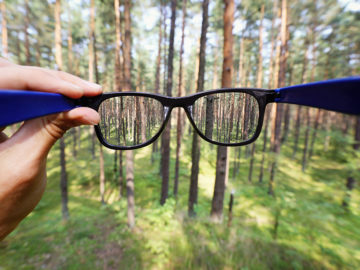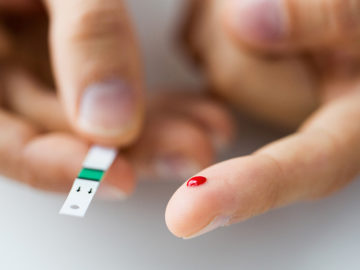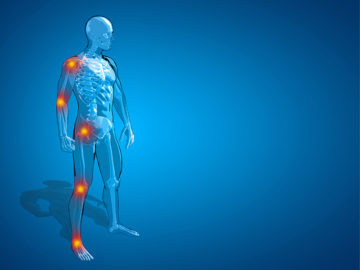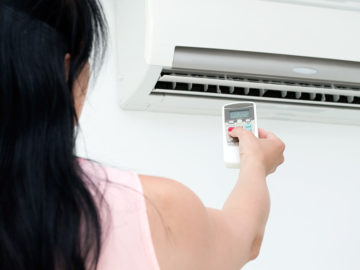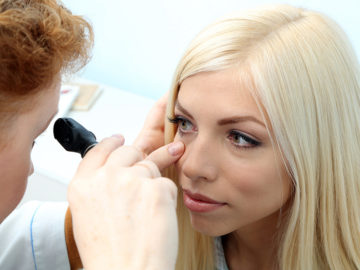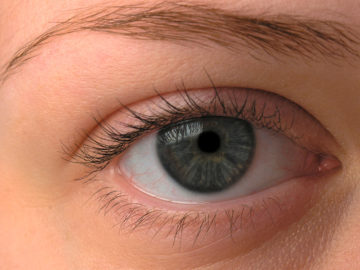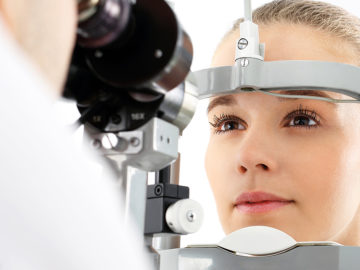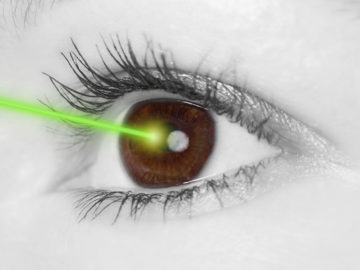Dry eyes with thyroid disorders
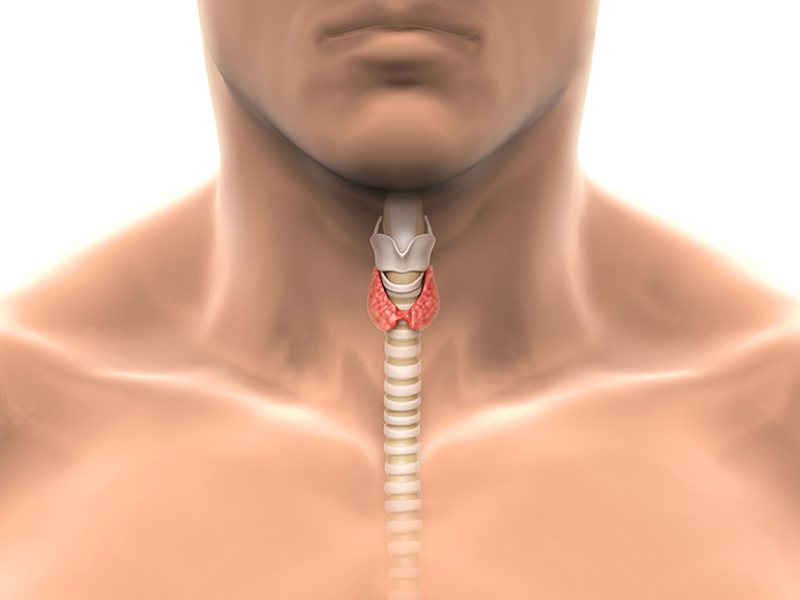
The thyroid gland is located in the throat and regulates the hormonal balance in the body. Diseases of the thyroid affect the complete body and dry eyes can be one symptom.
The thyroid gland is a central control point for metabolic processes. That is why metabolic disorders are typical consequences of thyroid disease. Even the sensitive eyes can be affected, which is why many patients with thyroid
The thyroid gland regulates the metabolism
In a healthy condition, the human body has a finely balanced hormonal system. The thyroid is substantially involved in regulating this hormonal system and therefore also various metabolic processes. If the thyroid malfunctions, the hormonal balance is disrupted. The complete metabolism is then affected.
A diseased thyroid gland is often overactive or underactive, which means, that too many or too few hormones are produced. The most common form of overactivity is the so-called autoimmune disorder Graves’ disease (also Basedow’s disease). An underactive thyroid, on the other hand, is usually caused by the autoimmune disease Hashimoto’s thyroiditis. Alongside many other concomitant symptoms, both forms can entail dry eyes.
When the eye socket is diseased because of a malfunction of the thyroid gland, it is referred to as endocrine orbitopathy. It affects ten per cent of people with thyroid disease, of which 90 per cent of the cases are in conjunction with the autoimmune disorder Graves’ disease and 60 per cent1,2 in conjunction with an overactive thyroid. It is rarely found in conjunction with Hashimoto’s thyroiditis.
The cause of endocrine orbitopathy is as yet largely unknown. It is considered to probably be an autoimmune disease. It entails the immune system being wrongly directed against the structures of one’s own body, and in the case of endocrine orbitopathy, probably attacking certain areas of the eye socket. The eyes (one or both) of the patient affected protrude strongly (exophthalmos), which leads to a massive disruption in lubrication.
Dry eyes with an underactive thyroid (hypothyroidism)
An underactive thyroid gland distributes too little of the hormones thyroxine (T4) and triiodothyronine (T3). The whole metabolism of the body is slowed down by the lack of hormones, which brings with it a creeping development of symptoms. The most observed symptoms of an underactive thyroid gland are:
- Exhaustion, feebleness and lethargy (adynamia)
- Hair loss
- Weight gain
- Slowed heart rate, low blood pressure
- Decreasing ability to concentrate
- Constipation (tendency to infrequent stools)
Additionally, the skin can often appear rough and dry, and the eyes can be swollen. The reason for this can be a so-called myxoedema. This entails the increased storage of protein-sugar-acid compounds in the fat tissue of the subcutis, so that the skin appears swollen and pasty. The swelling around the eye leads to the eyelids not being able to close fully – as a result the eyes dry out. Because blinking regularly spreads lacrimal fluid over the eye, it is essential for the lubrication of the eye.
In general, dry mucous membranes belong to the symptoms of an underactive thyroid gland. Mouth, nose, throat and eyes cannot produce enough fluid due to the faulty regulation of hormones in the body.
Dry eyes with an overactive thyroid gland (hyperthyroidism)
In contrast to an underactive thyroid gland, an overactive thyroid produces too many T3 and T4 hormones. This also has an effect on the metabolism: it is really overactive. Typical symptoms are:
- Irritability, nervousness
- High blood pressure and pulse rate
- Weight loss
- Diarrhoea
- Muscle weakness and muscular pain
In most cases, Graves’ disease is the cause of an overactive thyroid gland. With this autoimmune disorder, the hormone-producing cells in the thyroid gland are attacked by the body’s own immune system. They thereby produce a surplus of hormones, completely detached from the body’s actual requirement. This immune reaction can usually be observed by swellings on the lower leg (pretibial myxoedema) or in the eye socket (endocrine orbitopathy).
Symptoms of endocrine orbitopathy
If endocrine orbitopathy is present, the inflammatory immune reaction in the eye socket leads to a swelling of the tissue. As a result, the eye protrudes out of the eye socket (exophthalmos), the eye muscles become thickened and visual disorders occur.
Further symptoms of endocrine orbitopathy are:
- Watery, burning eyes
- Foreign body sensation
- Sensitivity to light
- Red eyes
- Inflammation of the cornea– or conjunctivitis
- Swollen eyelids
- Often a painful feeling of pressure, headaches
- Double vision
Because the eye is protruding from the eye socket, and often the eyelids cannot be closed fully, the cornea also dries out.
Dry eyes with thyroid disorders: what the doctor does
If there is a suspicion that dry eyes are as a result of a thyroid disease, different examinations are carried out in order to ascertain the cause. Above all, there is an extensive discussion (anamnesis) in which the doctor records the case history and all symptoms. Finally, the eye pressure and the mobility of the eyeball are examined, and the field of vision and the width of the eye opening are determined.
A blood test will show if there is a lack or a surplus of thyroid hormones. A magnetic resonance imaging (MRI) examination makes visible the muscle swellings in the eye socket and provides an insight into the degree of endocrine orbitopathy.
Treatment of dry eyes with thyroid disease
No matter if the dry eyes are caused by an underactive or overactive thyroid gland, the therapy in the first instance consists of returning the hormonal levels back to normal. For an underactive thyroid gland, that means taking synthetically produced thyroxine, which replaces the missing hormone effect in the body (substitution). Once the patient has adjusted to the right hormone dosage, all symptoms of an underactive thyroid gland usually disappear – including dry eyes.
An overactive thyroid can be restrained with the aid of certain medicines (thyrostatic drugs). In the long-term, overactive thyroid tissue is in most cases destroyed by radioiodine therapy. An operation on the thyroid gland takes place if it becomes greatly enlarged.
These actions usually also help the eye symptoms of Graves’ disease to improve. Moreover, lubricating eye drops or a nurturing eye ointment can be used for dry eyes in order to maintain the function of the eye and to alleviate the symptoms of dry eyes. Special light blocking glasses help to protect against high sensitivity to light.
If the symptoms on the eye are severe, the inflammation can be contained with radiotherapy of the eye tissue or the taking of medicines from the glucocorticoids drug class. An operation on the eyes will only be considered when the optic nerve is threatened or cosmetic constraints are present.
1 Grehn: Augenheilkunde 31st Edition, Springer Berlin 2012, page 246
2 Thiemes Innere Medizin: TIM, Thieme Verlag Stuttgart 1999, page 179



